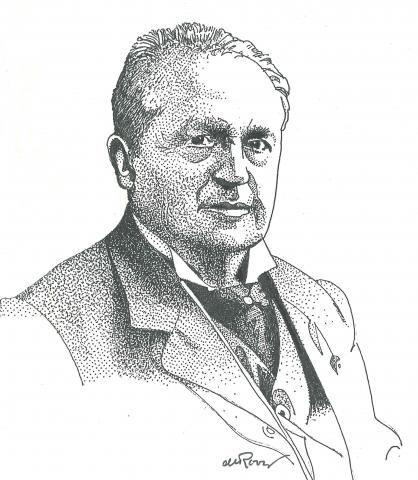A revised and updated version of
Abraham Kuyper: An Annotated Bibliography 1857-2010 by Tjitze Kuipers (2011)
You can buy a printed edition of this book on the site of the publisher.
1868
A corrected, modified, and stylishly printed version of the Marnix Society circular letter (see 1868.03), which was sent out to raise funds and solicit membership. After indicating the desirability of assembling the primary sources of Dutch church history, the circular letter identifies the goal of the Marnix Society: to track down documents from the earliest period of the Reformation in the Netherlands, to collect them, and to publish them in editions intended for scholarly use. The Dutch Reformed Church had lagged behind her sister churches in Germany, England, France, and Switzerland in this respect.
The Marnix Society was an imitation of the English Parker Society (1840–1855) and the French Société de l’histoire du Protestantisme français (1852–1870). The name Marnix-Vereeniging was chosen by Kuyper because the commission that Ph. Marnix van Sint Aldegonde (1540–1598) had received from the Synod of Emden (1571) was comparable to the task that the Marnix Society set for itself. The circular letter was signed by five members of the board: G. Groen van Prinsterer, honorary chairman, B. ter Haar, W.G. Brill, J.J. van Toorenenbergen, A. Kuyper, and A.W. van Beeck Calkoen, secretary. The list of supporters (see 1868.01 and 1868.03) bore the names of twelve prominent Dutchmen, of whom eight were professors.
Three supplementary documents were included with the circular letter: a flyer with the bylaws of the Marnix Society, dated March 20, 1868 (see 1868.02), a subscription form, and a registration form.
In accordance with the statutes of the Marnix Society, its publications were not sold to the public. Members of the society all received a free copy of every published volume.
The stock of the Marnix Society was sold in 1889 to Martinus Nijhoff in The Hague for ƒ1,200. An inventory carried out just prior to the sale reports 3,793 copies in stock—a remarkably high number, considering that each of the sixteen volumes published by the Marnix Society to that point had a print run of 350. The sixteen-volume series was subsequently sold for ƒ20.- per set. According to Oude en nieuwe boekhandel van Martinus Nijhof te ’s-Gravenhage. Fondscatalogus 1853–1897 (’s-Gravenhage, 1898), the set was still available and separate volumes could be ordered.
Concerning the works of the Marnix Society, see 1871.02.

